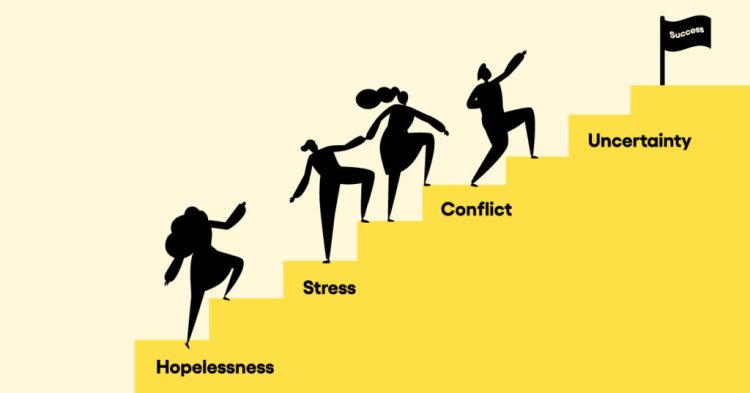7 Key Areas of Development for Employees (With Examples)
Examples of areas of development for employees · Goal-setting · Communication · Collaboration · Listening · Conflict resolution · Adaptability

Even if you already feel that your contributions are valued at work, there are still ways to grow professionally that will boost your efficiency and open doors to new opportunities. Investing in your personal growth will pay dividends in the form of increased pride in your abilities and productivity at work. Improvement is often worth the time and energy put into figuring out where it needs to be applied.
What are key areas of development for employees?
One's work life can always profit from honing one's abilities in a certain field. You can become a more valuable team member, compassionate coworker, and effective worker by putting effort into these areas. Managers and businesses can foster a culture that promotes self-improvement and allows for professional growth by providing opportunities for employee development beyond technical and academic skills.
1. Goal-setting
Setting professional goals can help you narrow your attention and increase productivity if you're feeling lost in your career. Team initiatives typically include both long-term and short-term objectives, but investing in your own professional growth is essential if you want to take pride in your contributions.
- Setting goals for yourself is essential to furthering your development and can be done via an internet application or a notepad.
- Methods of goal-setting differ, however you can try the following to increase your chances of success:
- Break down the overarching objective into more manageable subgoals.
- Create a checklist, a spreadsheet, or an electronic document on your phone where you can store your goals and refer to them often.
- Make a collage of images that symbolize what you want to achieve.
2. Communication
Everyone in an office or on a team brings something unique to the table. That variety can assist offer new insights to a project, but it can also highlight the ways in which your communication style may differ from that of a colleague. It's much easier to get along with people when you take the time to learn about and accommodate their preferred methods of communication.
- If you want to make your team more cohesive, try these suggestions:
- Find a happy medium between group gatherings, private conversations, and remote contact to satisfy everyone's needs.
- Schedule regular times to meet or establish a pattern that allows for timely communication.
- To ensure that everyone on the team has a chance to lead and facilitate discussion, it's best to rotate who takes that role during in-person meetings.
3. Collaboration
Sharing and cooperation, the early foundations of collaboration, are learned behaviors. Collaboration in the workplace means working with people who have different experiences and perspectives than your own. Working with others can motivate you to get more done than if you tried to do it on your own.
Some suggestions for fostering cooperative rapport:
- Encourage teamwork by holding regular brainstorming sessions in which everyone's ideas and opinions are heard and considered.
- Learn each other's capabilities and develop a culture of mutual support by taking part in team-building activities or working retreats.
- Explore different collaboration options with your coworkers on smaller projects before taking on a larger one.
4. Listening
A competent listener possesses a wide range of skills that can be learned and honed with experience. In the workplace, those who are good listeners can help those who are looking for mentorship or career advice, who want to share ideas for completing projects, and who want to get to know their coworkers better.
Some tips on how to improve as a listener are as follows.
- Maintain constant eye contact and refrain from looking away at any time, especially at electronic devices.
- Don't fill quiet with more words or questions; give the other person time to think.
- Send a message of sympathy, joy, congratulations, or encouragement, as appropriate.
- If you need clarification or want to get more information from the other person, ask them some intelligent follow-up questions.
5. Conflict resolution
It's not always simple to figure out how to resolve conflicts with coworkers. If you and another party have been unable to work out your disagreements, mediation or other forms of conflict resolution assistance may be in order.
Some suggestions for easing tension:
- Get some formal training in dealing with conflicts in a non-threatening setting before you need it.
- Get some distance from the situation if you're becoming worked up, and wait until you've calmed down before bringing up your issues.
- Do not make false accusations. Try this alternative wording instead:
6. Adaptability
There are several circumstances that can alter the scope of a project, and even the most meticulous brainstorming and planning may not be able to account for them. Deadlines and deliverables can be impacted by factors such as a change in leadership, a client's refocusing of their goal, a financial setback, or a reorganization of staff. Employees who can easily adjust to new responsibilities and environments will be more successful overall.
Some suggestions on how to adapt better to a dynamic workplace setting:
- It's important to recognize and accept the possibility of change before initiating a project.
- If a project's direction changes, it's important to sit down as a team and reevaluate and redefine the scope, just as you would at the project's inception.
- Even if many components of your work change, you can stay calm and focused on results by repeating mantras or reading motivational quotes.
7. Organization
An organized approach to work will benefit all facets of your work life. When you have everything in order, whether it's paper files, digital files, or data entered into a database or a task-tracking application, you'll be better able to respond to queries and stay on schedule.
Some suggestions for maintaining order in your workplace:
- Spend some time each day being organized, whether that's 30 minutes after lunch spent filing papers or a few minutes per hour spent updating a spreadsheet.
- Make use of both digital and analog filing systems, such as external hard drives and the cloud, and identify all of your files and documents clearly and consistently.
- Prioritize your work by moving it to the front of your inbox, whether that's a physical one on your desk or an electronic one that helps you stay on top of things with alerts and reminders.













